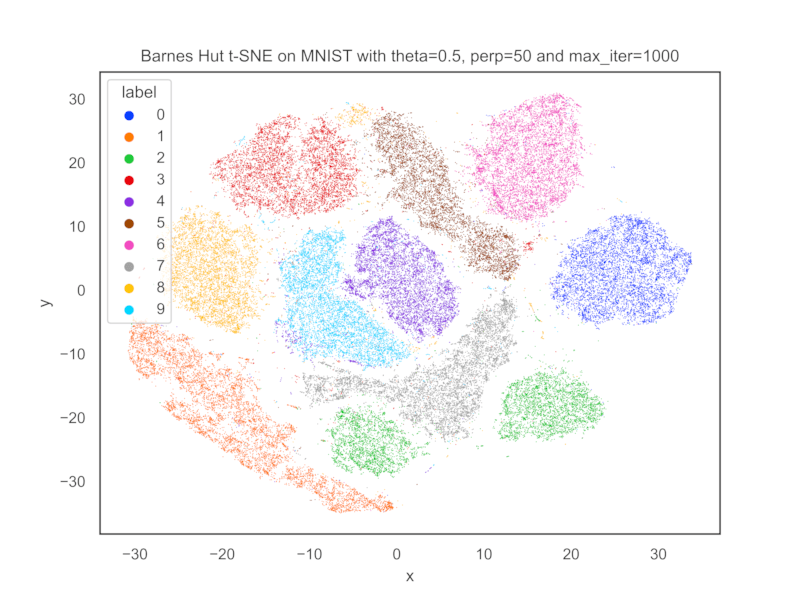10个版本
| 0.5.2 | 2022年7月29日 |
|---|---|
| 0.5.1 | 2022年2月13日 |
| 0.5.0 | 2021年10月15日 |
| 0.4.1 | 2021年7月24日 |
| 0.1.0 | 2020年8月21日 |
#185 in 机器学习
每月69次下载
在 linfa-tsne 中使用
81KB
1.5K SLoC
bhtsne
用Rust编写的t-SNE算法的并行Barnes-Hut和精确实现。该算法的树加速版本在这篇论文中有详细描述,作者为Laurens van der Maaten。该算法的精确、原始版本在这篇论文中有描述,作者为G. Hinton 和 Laurens van der Maaten。还包括本在内的其他算法实现。
安装
将此行添加到您的 Cargo.toml
[dependencies]
bhtsne = "0.5.1"
文档
API文档在此处可用:此处.
示例
该实现支持自定义数据类型和自定义定义的度量。例如,一般向量数据可以按以下方式处理。
use bhtsne;
const N: usize = 150; // Number of vectors to embed.
const D: usize = 4; // The dimensionality of the
// original space.
const THETA: f32 = 0.5; // Parameter used by the Barnes-Hut algorithm.
// Small values improve accuracy but increase complexity.
const PERPLEXITY: f32 = 10.0; // Perplexity of the conditional distribution.
const EPOCHS: usize = 2000; // Number of fitting iterations.
const NO_DIMS: u8 = 2; // Dimensionality of the embedded space.
// Loads the data from a csv file skipping the first row,
// treating it as headers and skipping the 5th column,
// treating it as a class label.
// Do note that you can also switch to f64s for higher precision.
let data: Vec<f32> = bhtsne::load_csv("iris.csv", true, Some(&[4]), |float| {
float.parse().unwrap()
})?;
let samples: Vec<&[f32]> = data.chunks(D).collect();
// Executes the Barnes-Hut approximation of the algorithm and writes the embedding to the
// specified csv file.
bhtsne::tSNE::new(&samples)
.embedding_dim(NO_DIMS)
.perplexity(PERPLEXITY)
.epochs(EPOCHS)
.barnes_hut(THETA, |sample_a, sample_b| {
sample_a
.iter()
.zip(sample_b.iter())
.map(|(a, b)| (a - b).powi(2))
.sum::<f32>()
.sqrt()
})
.write_csv("iris_embedding.csv")?;
在示例中使用欧几里得距离,但可以选择其他距离度量,如字符串,并定义并插入。
并行性
基于 rayon 构建,算法使用与可用CPU数量相同的线程数。请注意,在启用超线程的系统上,这等于逻辑核心数,而不是物理核心数。有关更多信息,请参阅rayon的常见问题解答。
MNIST嵌入
以下嵌入是通过使用PCA将MNIST训练集的维度降低到50来获得的。在2.0GHz四核第十代i5 MacBook Pro上,这大约花费了3分6秒。
依赖项
约4MB
约67K SLoC